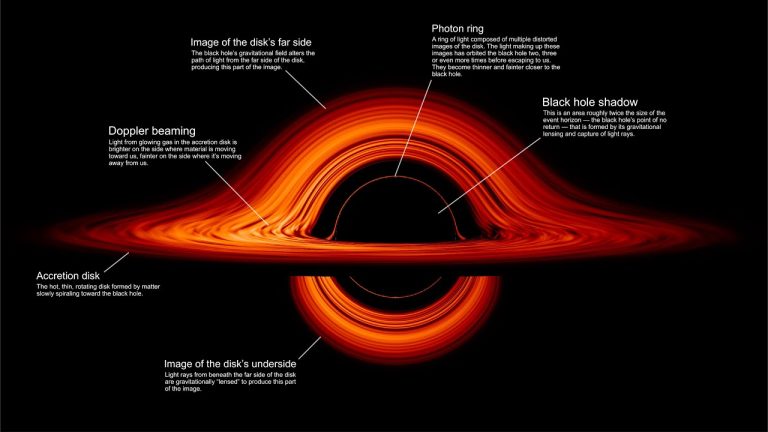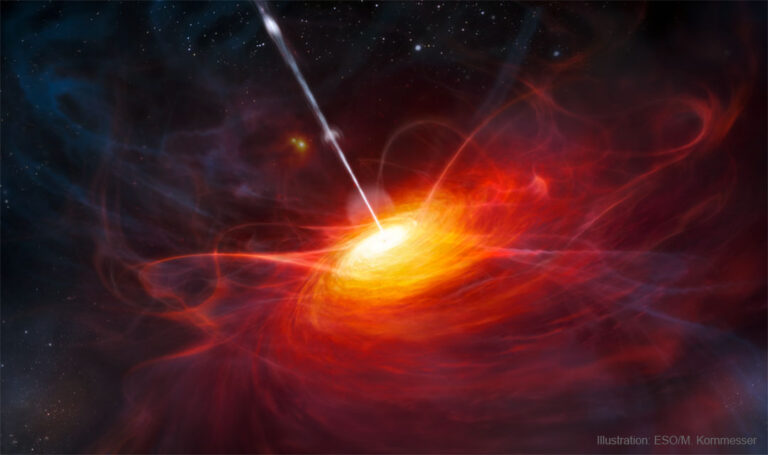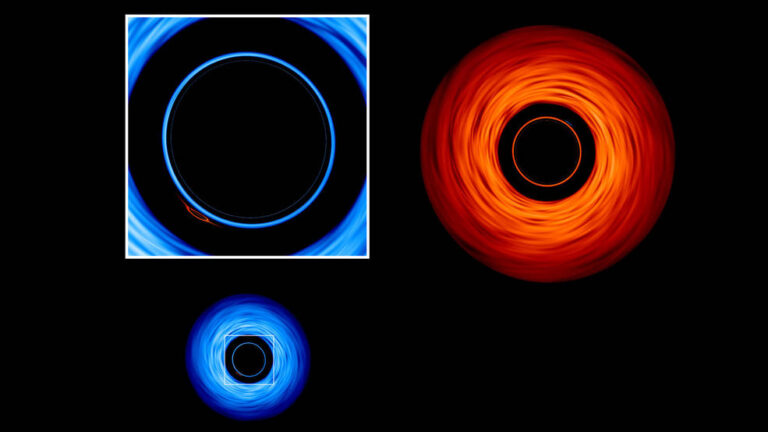视象化: 黑洞的吸积盘
请参阅说明。单击视频将下载可用的最高分辨率版本。

请参阅说明。单击视频将下载可用的最高分辨率版本。

一个旋转的蓝色吸积盘在中间有一个很深的彩色凹痕。一股浅色喷流从中间的一个小点(黑洞)射出。有关更多详细信息,请参阅说明。

2022年2月22日 Illustration: An Early Quasar Illustration Credit & License: ESO, M. Kornmesser Explanation: What did the first quasars look like? The nearest quasars are now known to involve supermassive black holes in the centers of active galaxies. Gas and dust that falls toward a quasar glows brightly, sometimes outglowing the entire home galaxy. The quasars that formed in the first billion years of the universe are more mysterious, though. Featured, recent data has enabled an artist’s impression of an early-universe quasar as it might have been: centered on a massive black hole, surrounded by sheets of gas and an accretion disk, and expelling a powerful jet. Quasars are among the most distant objects we see and give humanity unique information about the early and intervening…

2021年04月16日 The Doubly Warped World of Binary Black Holes Scientific Visualization Credit: NASA, Goddard Space Flight Center, Jeremy Schnittman and Brian P. Powell – Text: Francis Reddy Explanation: Light rays from accretion disks around a pair of orbiting supermassive black holes make their way through the warped space-time produced by extreme gravity in this stunning computer visualization. The simulated accretion disks have been given different false color schemes, red for the disk surrounding a 200-million-solar-mass black hole, and blue for the disk surrounding a 100-million-solar-mass black hole. That makes it easier to track the light sources, but the choice also reflects reality. Hotter gas gives off light closer to the blue end of the spectrum and material orbiting smaller black holes experiences stronger gravitational effects…